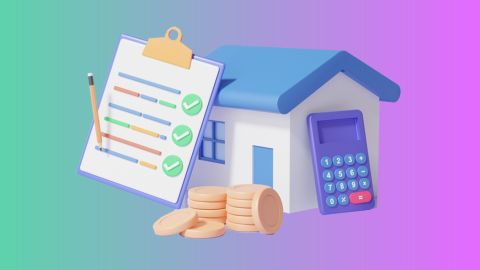When buying or selling a flat, one of the most crucial documents you need is the flat sale deed. This legal document ensures that the transaction is secure, transparent, and binding for both parties. Understanding the flat sale deed format is essential for anyone involved in property transactions. Whether you are a buyer, seller, or a legal professional, a well-drafted sale deed can protect your interests and prevent potential disputes.
At Bajaj Finserv, we understand the complexities involved in real estate transactions. That is why we offer solutions like Loan Against Property, which can help you leverage your property to secure financing for various needs. By understanding the intricacies of the flat sale deed format, you can ensure that your property transactions are legally sound and beneficial. For more information on how you can benefit from our services, check out our Bajaj Finserv Loan Against Property.
Introduction to flat sale deed format
A flat sale deed is a legally binding document that outlines the terms and conditions of the sale of a flat. It is a critical component of any property transaction, ensuring that both the buyer and seller agree on the specifics of the sale. This document serves as proof of ownership transfer and is vital for legal recognition of the transaction.
Understanding the flat sale deed format
The flat sale deed format includes various elements that need to be carefully drafted to ensure the legality and clarity of the transaction. Each section of the deed should be precise and cover all necessary details to avoid future disputes. Typically, a flat sale deed format will include information about the parties involved, the property details, the sale consideration, and other relevant terms.
Importance of having a proper sale deed format
Having a well-drafted sale deed format is crucial for several reasons:
- Legal validity: It provides legal recognition of the sale transaction.
- Protection against disputes: Clearly outlines the terms to prevent future disagreements.
- Proof of ownership: Serves as legal proof of the ownership transfer.
- Financial security: Ensures that the financial aspects of the transaction are documented and agreed upon.
Key elements of a flat sale deed format:
- Parties involved: Names and details of the buyer and seller.
- Property description: A detailed description of the flat being sold.
- Sale consideration: The agreed sale price and payment details.
- Possession date: Date when the buyer will take possession of the property.
- Encumbrance certificate: Statement of any existing mortgages or claims on the property.
- Indemnity clause: Protection for the buyer against any legal defects in the property title.
Sample flat sales deed format template:
A sample flat sale deed format might look like this:
| Section | Details |
| Parties | Buyer and Seller information |
| Property details | Address, size, and description of the Flat |
| Sale price | Total consideration and payment schedule |
| Possession date | When the buyer will take possession |
| Encumbrance | Any existing claims or mortgages on the property |
| Indemnity | Protection clauses for both parties |
Legal requirements for flat sale deed formats
The flat sale deed must comply with various legal requirements to be valid:
- Stamp duty and registration: Must be duly stamped and registered with the local sub-registrar office.
- Witnesses: Should be signed by at least two witnesses.
- Legal scrutiny: Ensure that the deed is vetted by a legal professional to confirm compliance with local laws.
Critical clauses in a flat sale deed format:
- Title guarantee: Ensures that the seller has the right to sell the property.
- No objection clause: Ensures that there are no objections from any party regarding the sale.
- Default clause: Outlines the repercussions if either party defaults on the agreement.
- Dispute resolution: Specifies how disputes will be resolved, often through arbitration.
Common mistakes in drafting flat sale deeds:
- Incomplete property description: Missing critical details about the property.
- Incorrect financial details: Errors in the sale consideration or payment terms.
- Lack of witnesses: Not having the deed signed by witnesses can invalidate it.
- Ignoring legal scrutiny: Failing to have the deed reviewed by a legal expert.
Tips for drafting a valid flat sale deed format:
- Consult a legal expert: Always have a lawyer review the deed.
- Double-check details: Ensure that all property and financial details are accurate.
- Include all necessary clauses: Protect both parties by including critical clauses.
- Register the deed promptly: Ensure it is registered with the appropriate authorities without delay.
For additional security in property transactions, consider Bajaj Finserv Loan Against Property, which can provide financial flexibility by leveraging your property. Learn more about the features and benefits of for Loan Against Property from Bajaj Finance.
Understanding the flat sale deed format is essential for anyone involved in property transactions. By ensuring that all elements are correctly drafted and legally compliant, you can protect your interests and facilitate a smooth transaction. For more comprehensive support in your real estate dealings, explore the financial solutions offered by Bajaj Finserv, including our Loan Against Property, to help you manage your financial needs efficiently. Additionally, check out our Eligibility and Documents required to see if you qualify for the services.




